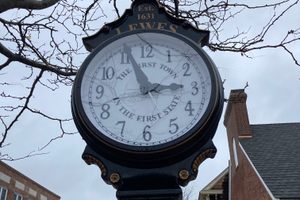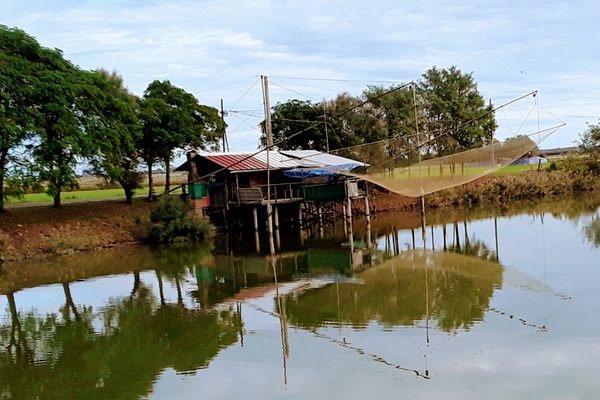About
The historic coastal town of Lewes, Delaware does not look like the center of any sort of industry, on first blush. But for more than 70 years, from the end of the 19th century all the way through the 1950s, Lewes was one of the country’s most prominent commercial fishing ports, with the key catch being menhaden fish. Today, a menhaden fishing net reel stands on the campus of Lewes’s historical society, but not without reeling in a little controversy of its own.
If you’ve never seen menhaden on the menu, don’t worry, you’re not alone. Menhaden goes by a few names, such as bunker or pogie, and it is generally considered to be oily and unpleasant to eat. More often, you’ll find menhaden in fish oil, in feed, in bait for predators, and in fertilizer.
As whaling declined, and the country needed new sources of oil, menhaden fishing took off, especially in the mid-Atlantic states. In Lewes, commercial menhaden fishing began in 1883, as the Luce Brothers and S.S. Brown & Co. built the first processing plant.
Menhaden are small silvery fish that are often found packed together thickly in giant schools, and so the industry began creating enormous nets to catch them. These seines would need to be preserved from mildew and rotting, and so large reels were created to dry them out. Workers would rotate the reels by walking in sync while singing sea shanties to keep time.
By 1938, Lewes’s fishing plant had become the largest in the United States, and it would continue to boom after the war as product designers continued to find new uses for fish oil in cosmetics, animal feed, and supplements. In Lewes, menhaden fishing was one of the few integrated industries in the state, and more than 1,000 workers, both Black and white, worked together in the plant. In particular, most of the workers manning the net reels were Black, and so the reel became a symbol of the African-American fishing experience.
The 1950s saw ever greater growth in the menhaden industry–soon the only thing missing was the menhaden. Overfishing led to a precipitous decline in the Atlantic menhaden industry by the 1960s, and most of the business packed up to the Gulf of Mexico and beyond. Most of Lewes’s and the region's net reels were lost, but one survived. This net reel was moved to a ceremonial space in the harbor in the early 1970s, and mostly left to rot. In 2020, the Lewes Historical Society moved it to their campus, and things got weird.
The menhaden fishing net reel was to become a centerpiece of the historical society’s campus, but many leaders in the community objected to it being brought on shore. In their eyes, the historical society failed to inform the community and fill out the proper paperwork, and neighbors were up in arms about the placement of the 19-foot tall and 30-foot wide net reel on the edge of campus. They claimed that it did not fit the neighborhood’s character and would be better left in the ocean.
On the other hand, Lewes Historical Society Director Jim Abbott pointed out that all of the buildings on the campus, including the Sussex Tavern, were imported from elsewhere, and the society had a longstanding mission to preserve town history. Many people on both sides noted that the controversy only arose when an object with significance to the civil rights movement was added to the campus.
In 2022, it was decreed that the menhaden fishing net reel would have to move from its original position. However, by that point, members of the historical society thought a compromise could be reached where it would be placed elsewhere on campus. For now, the reel stands in town as a symbol of a time when the menhaden became “the fish that built America.”
Related Tags
Know Before You Go
The menhaden fishing net reel is located, at least for the time being, on the Historic Shipcarpenter Street Campus of the Lewes Historical Society. The reel is visible from the street, and the campus grounds are free and accessible from dawn to dusk.
Published
June 21, 2024
Sources
- https://archives.delaware.gov/delaware-historical-markers/menhaden-fishing-industry/
- https://www.wboc.com/news/lewes-city-council-holds-public-hearing-on-menhaden-fishing-net-reel/article_29c22fbe-9e80-11ec-924b-afd25c023618.html
- https://www.motherjones.com/environment/2006/03/net-losses-declaring-war-menhaden/
- https://coastalreview.org/2021/08/our-coasts-history-menhaden-fishing-days/
- https://www.capegazette.com/article/menhaden-artifact-reels-lewes-controversy/207842
- https://www.capegazette.com/article/lewes-historical-society-restoring-menhaden-net-reel/205157































